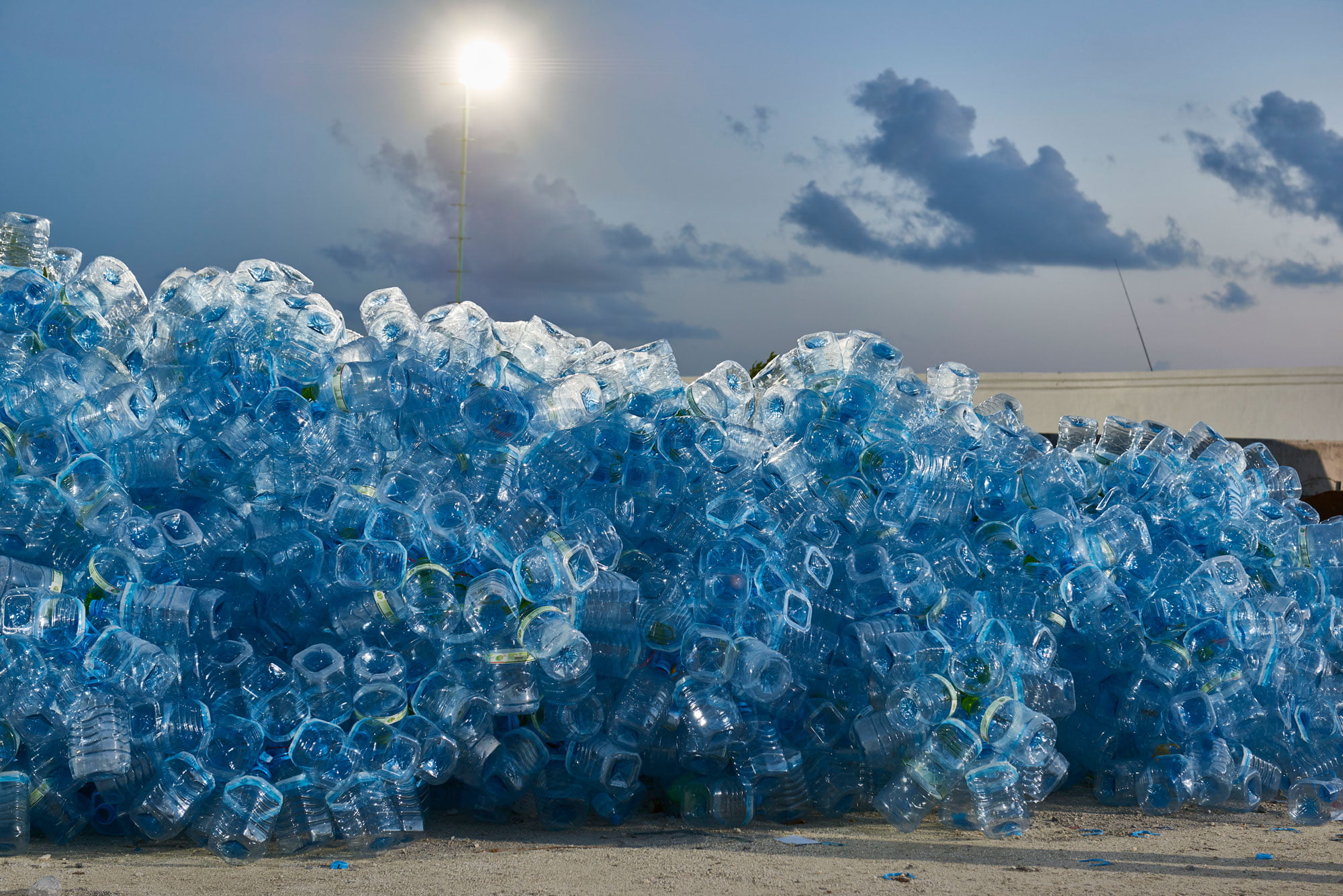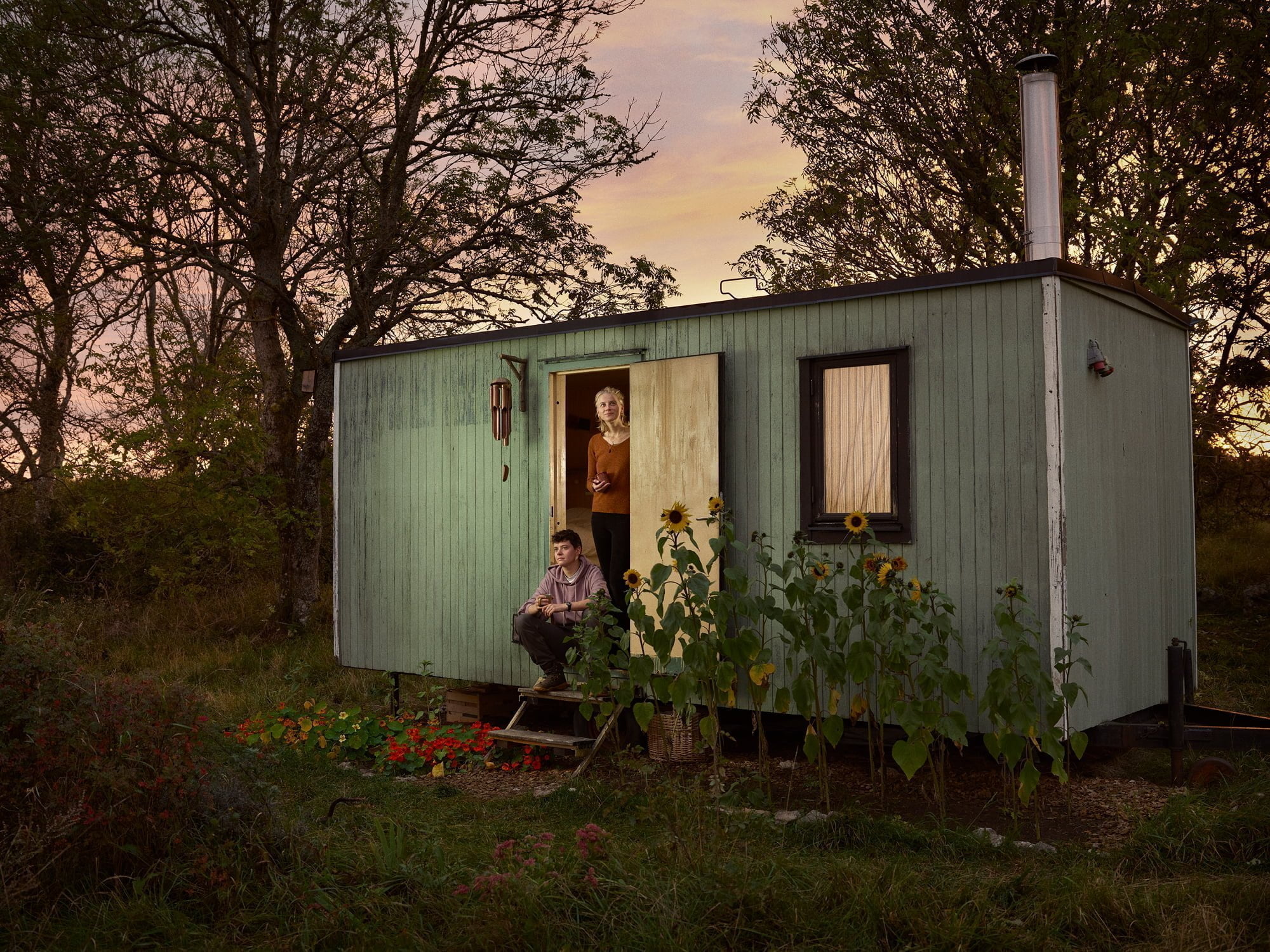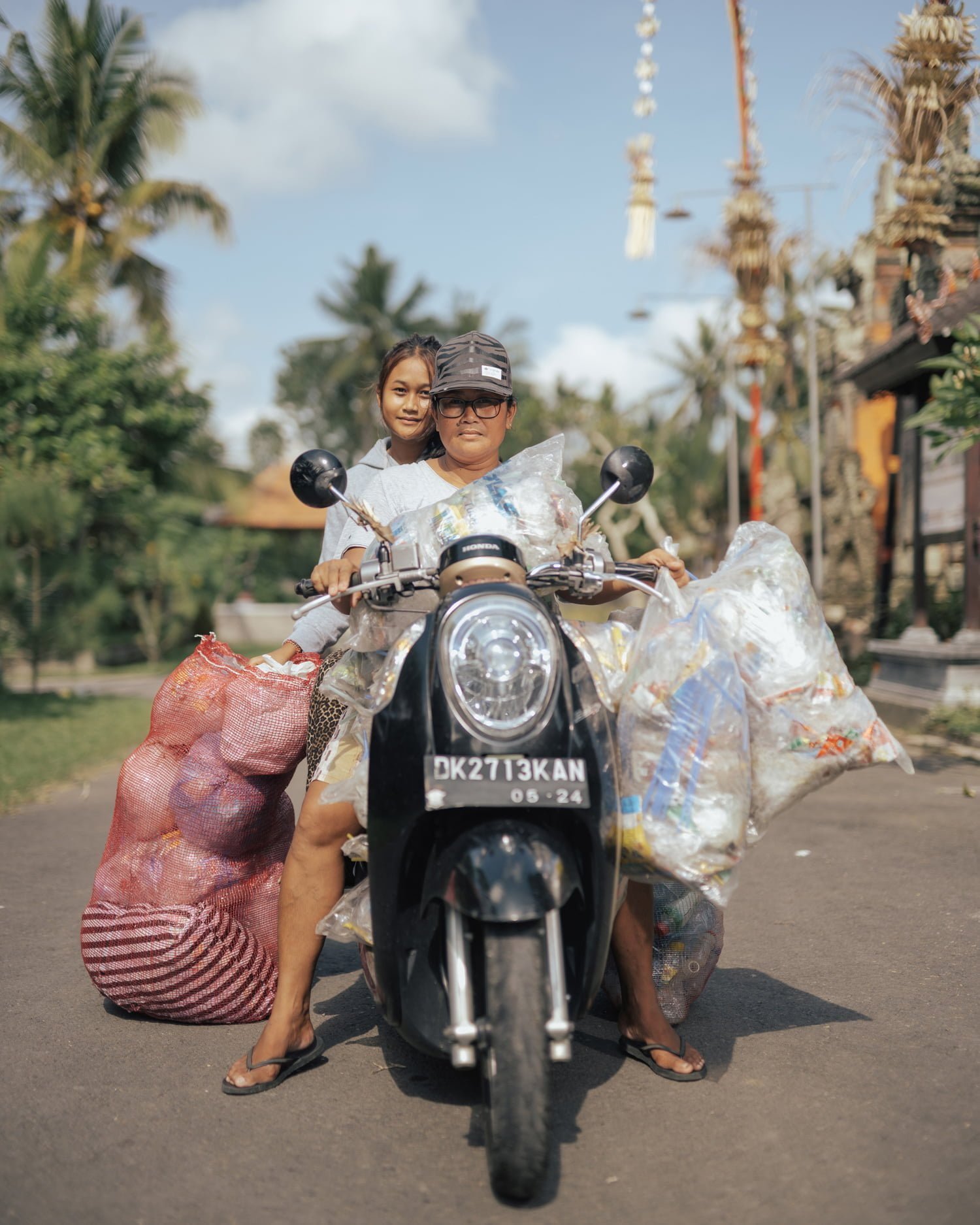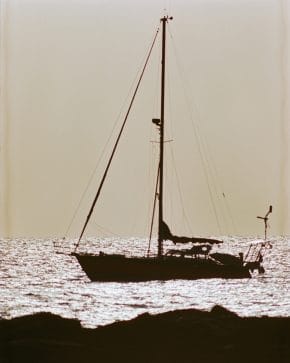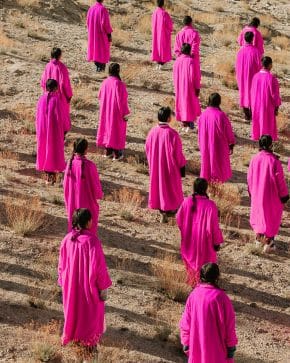With bright white sands and azure waters, the Maldives has long been synonymous with luxury resorts and tropical island bliss. But now this low-lying archipelago finds itself on the front line of the climate crisis – and locals are stepping up their efforts to create a more sustainable future.
Located in the middle of the Indian Ocean, about 80% of the land making up the Maldives is barely above sea level. Rising ocean levels brought on by global warming threaten its continued existence, with a rise of one metre already enough to submerge much of this island nation.
After 30 years of dictatorship and a succession of governments, the election of Ibrahim Solih as President two years ago has been seen as a hopeful sign of much-needed change. He has pledged to make environmental issues a political priority.
Although there is still much decisive action required, the government is working on developing renewable energy systems, including solar panels. Hydroponic greenhouses are being built on the most remote islands to make them self-sufficient and students are being taught about recycling and sustainability at school.
Photographers Giulia Piermartiri and Edoardo Delille visited the islands to document some of the new, green initiatives underway. But these islands can’t do it alone. While not responsible for the climate crisis, they are the first victims of its effects. Regular flooding and the sea of plastic refuse here and elsewhere reveal the urgent need for us all to clean up our act. Not in a decade, not in five years, but right now. In the Maldives, they know that there’s no time to waste.
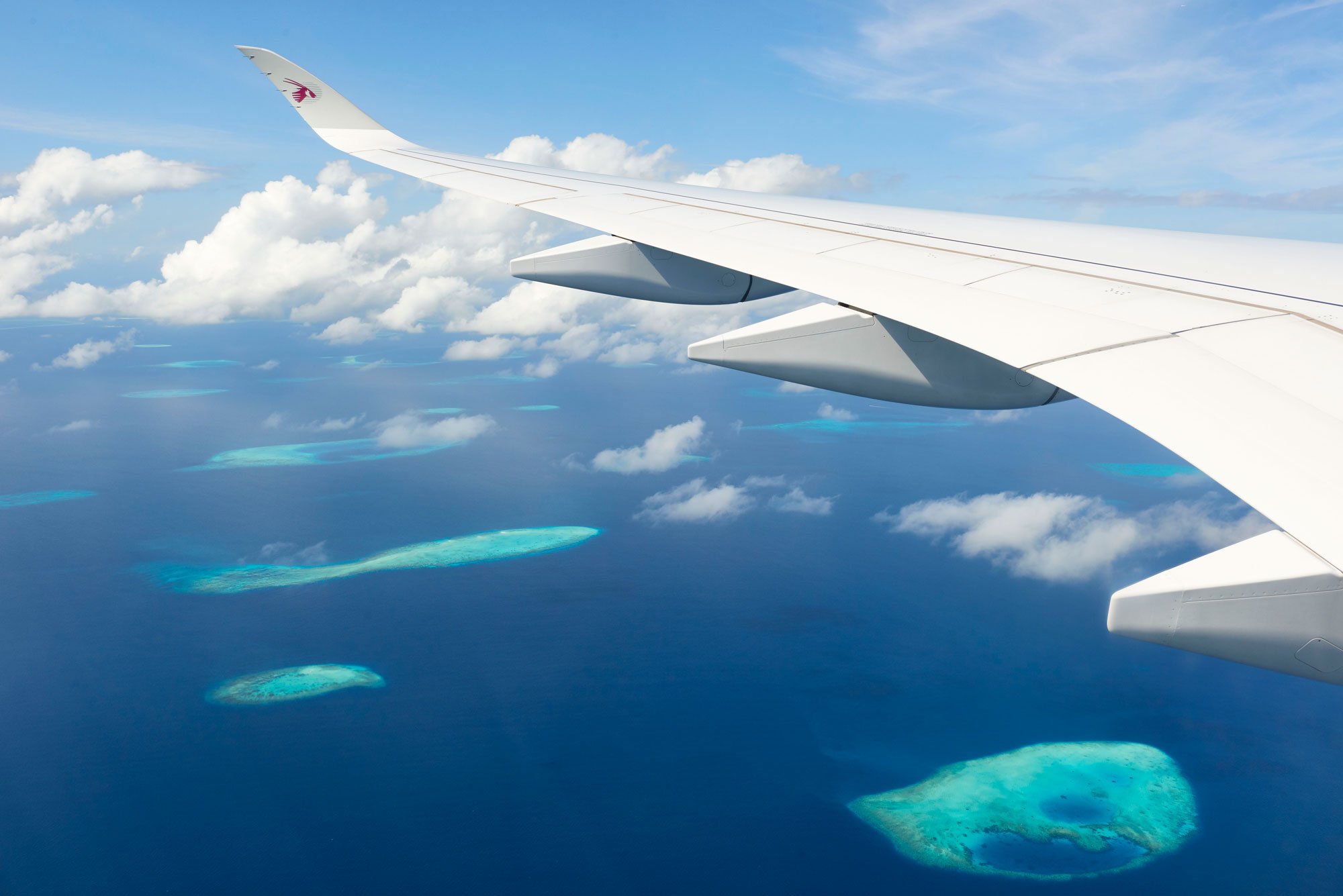
Some 1,200 islands make up the Maldives.
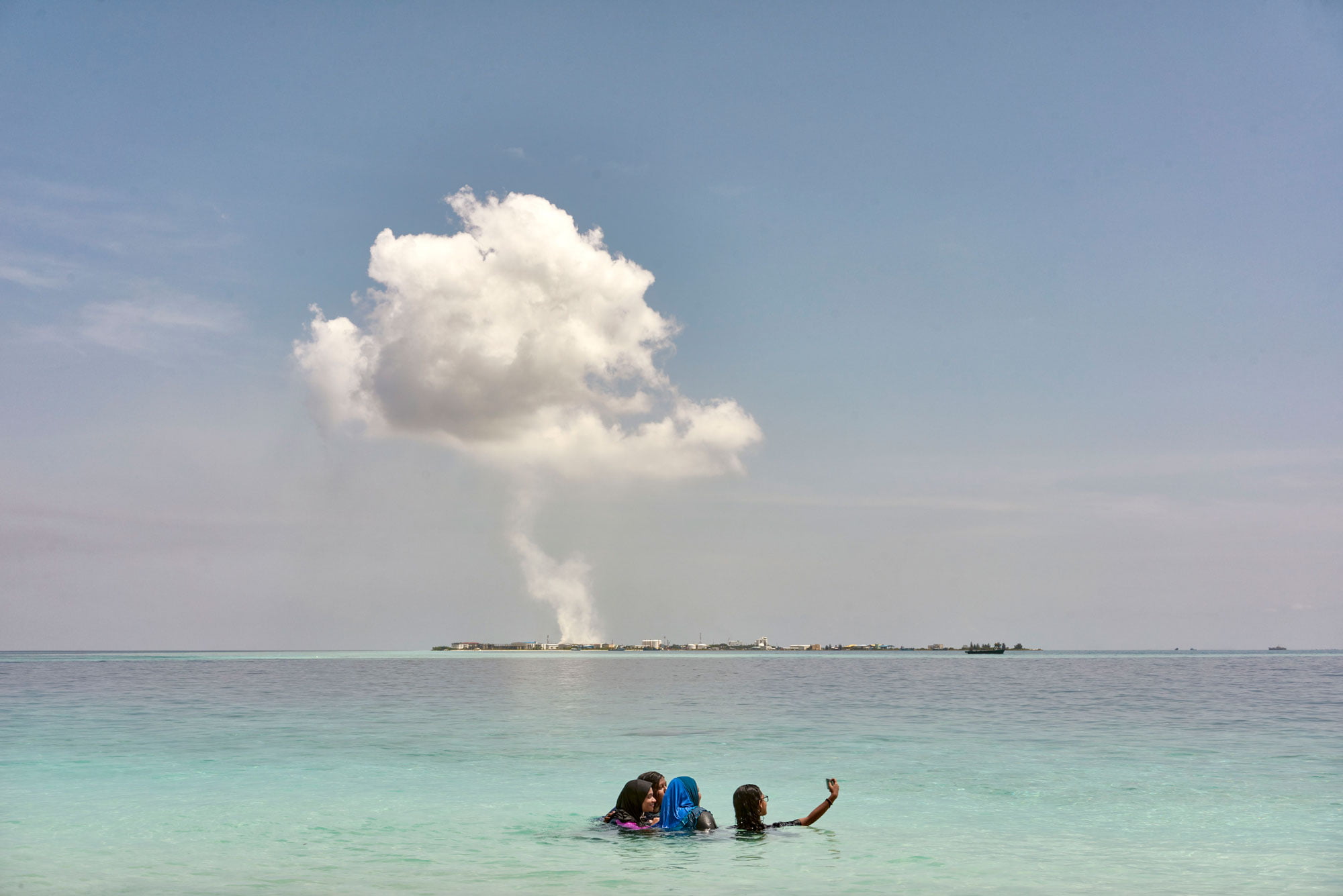
View of Thilafushi, believed to be the largest artificial landfill in the world.
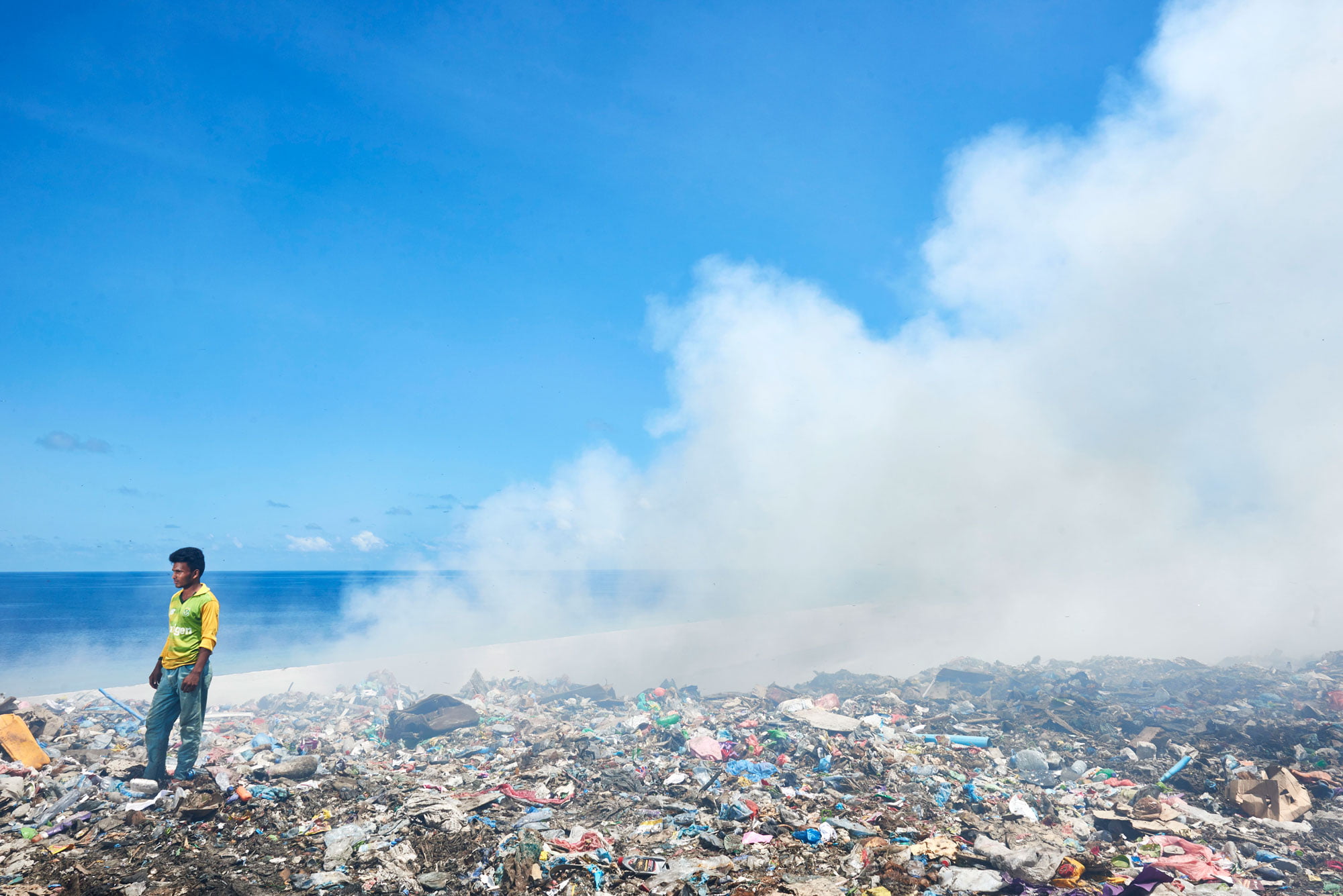
Open waste-burning on Thilafushi. Government efforts are underway to halt toxic smoke emissions.
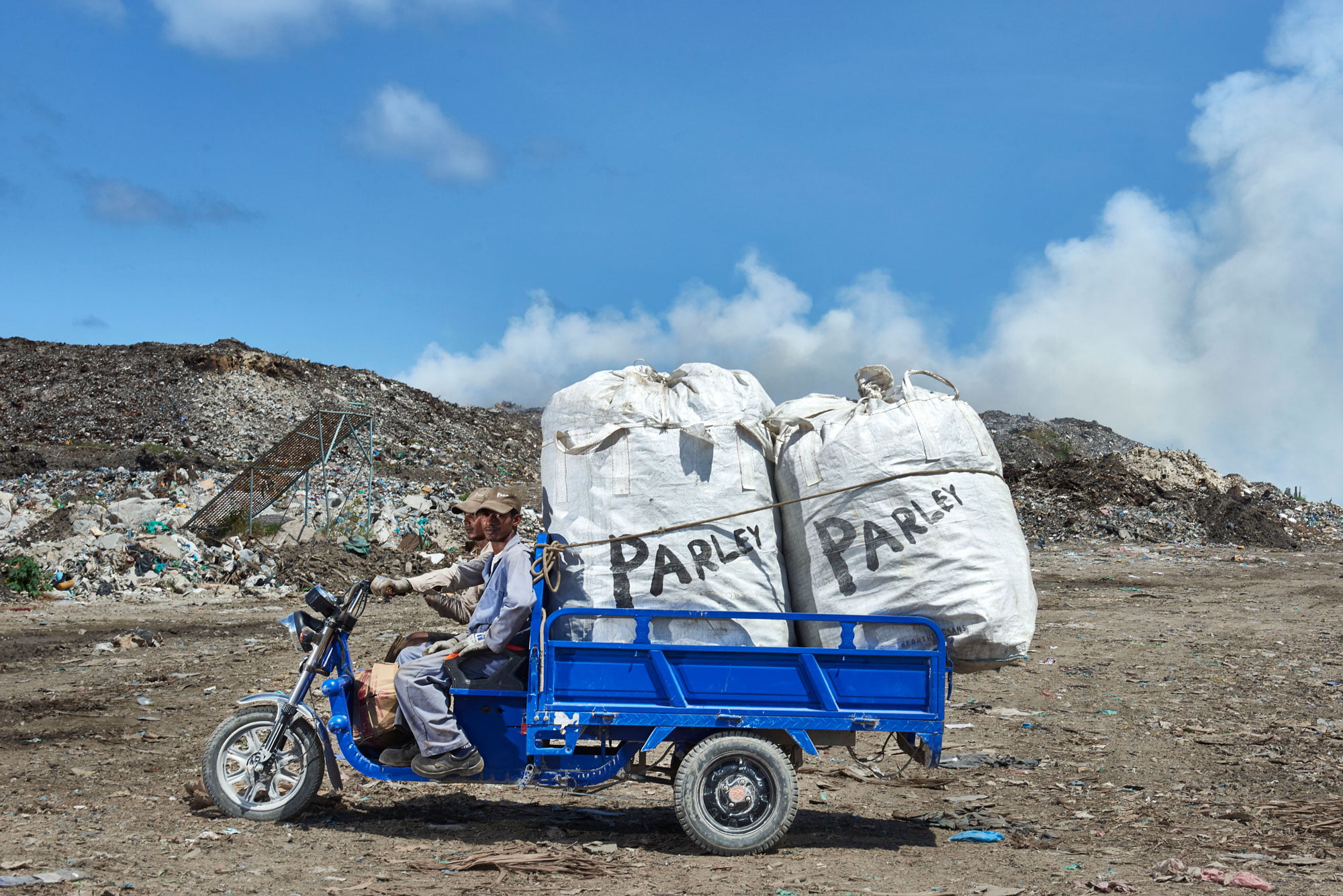
Ocean plastic collected by environmental organisation Parley for the Oceans on its way to be recycled.
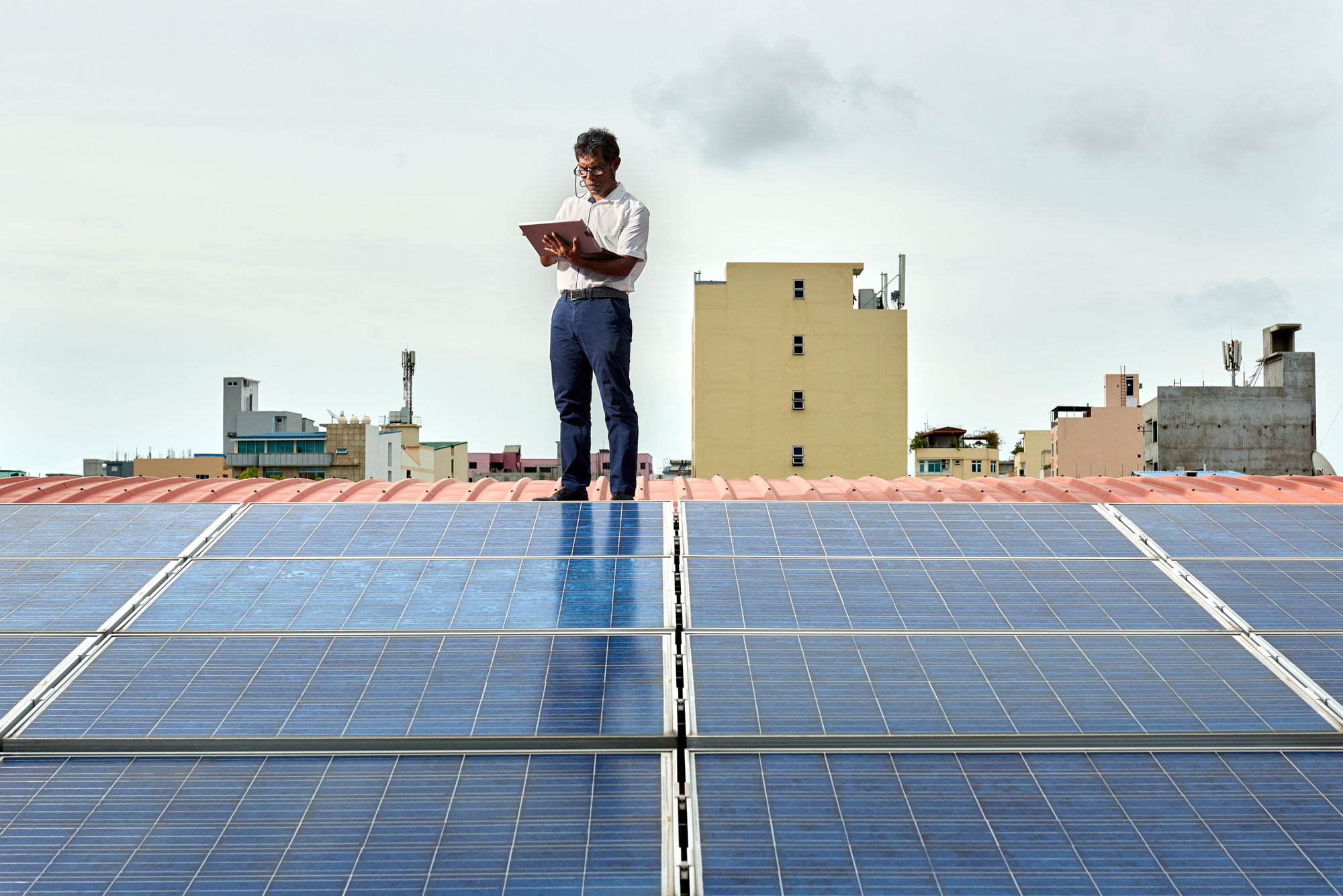
Ibrahim Nasheed, brother of former president Mohamed Nasheed, is involved in developing renewable energy systems across the Maldives.
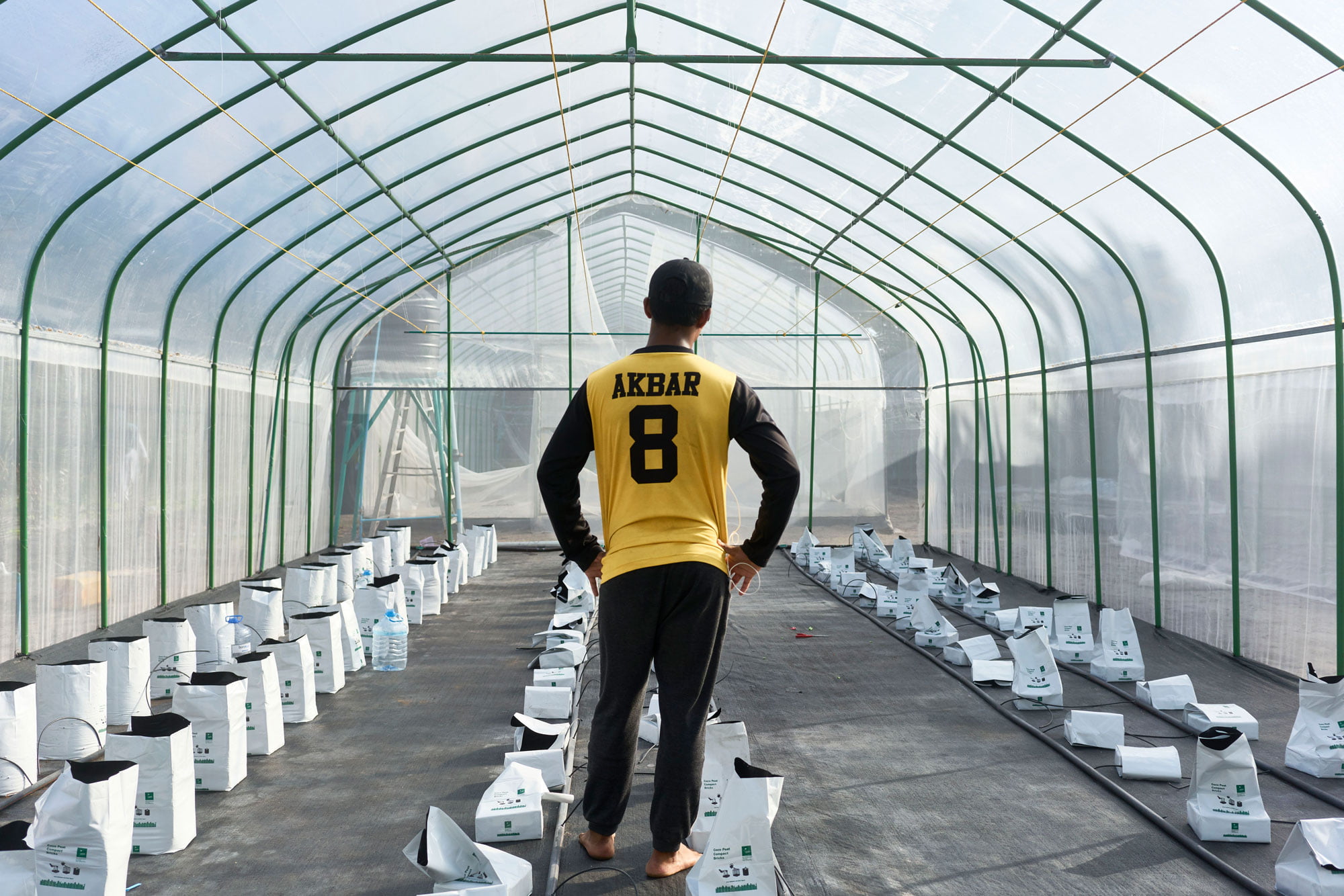
There are plans to build hydroponic greenhouses on almost every island. Growing more food locally means that less will need to be imported from afar.

Growing new coral in an underwater nursery on Magoodhoo island.

Coral nursery at the Marine Research and High Education Center, Magoodhoo island. The coral grown here can be transplanted to restore degraded ocean reefs.

In 1998, over 90% of shallow coral reefs in the Maldives died when El Niño raised sea temperatures by 4°C. Warming oceans continue to threaten coral reefs.
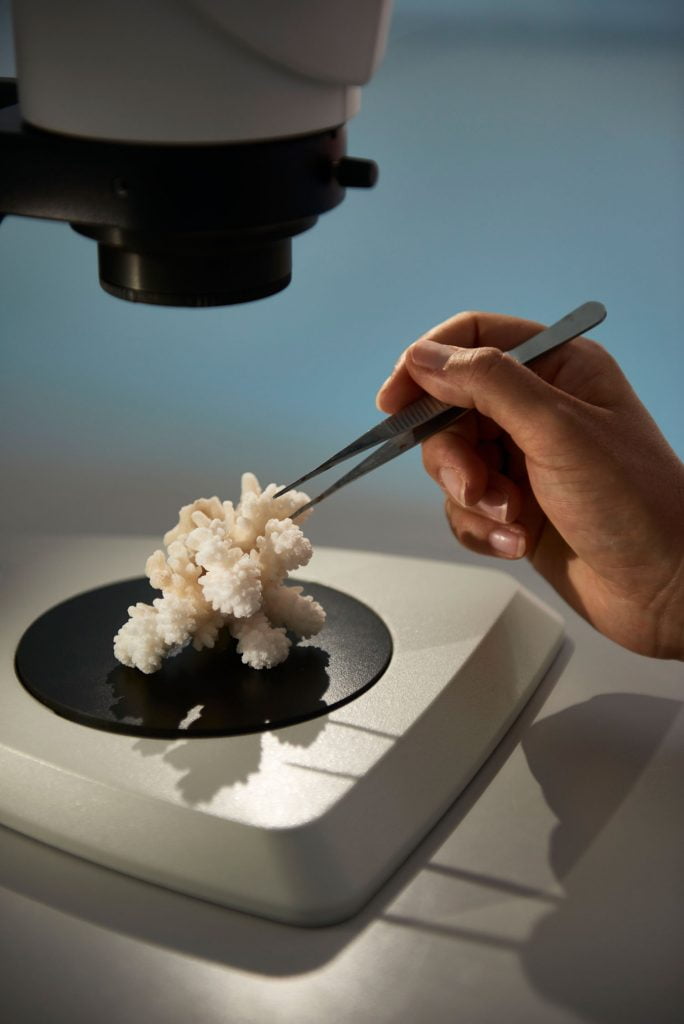
Large-scale coral restoration efforts are underway in the Maldives, combining conservation, education and scientific research.
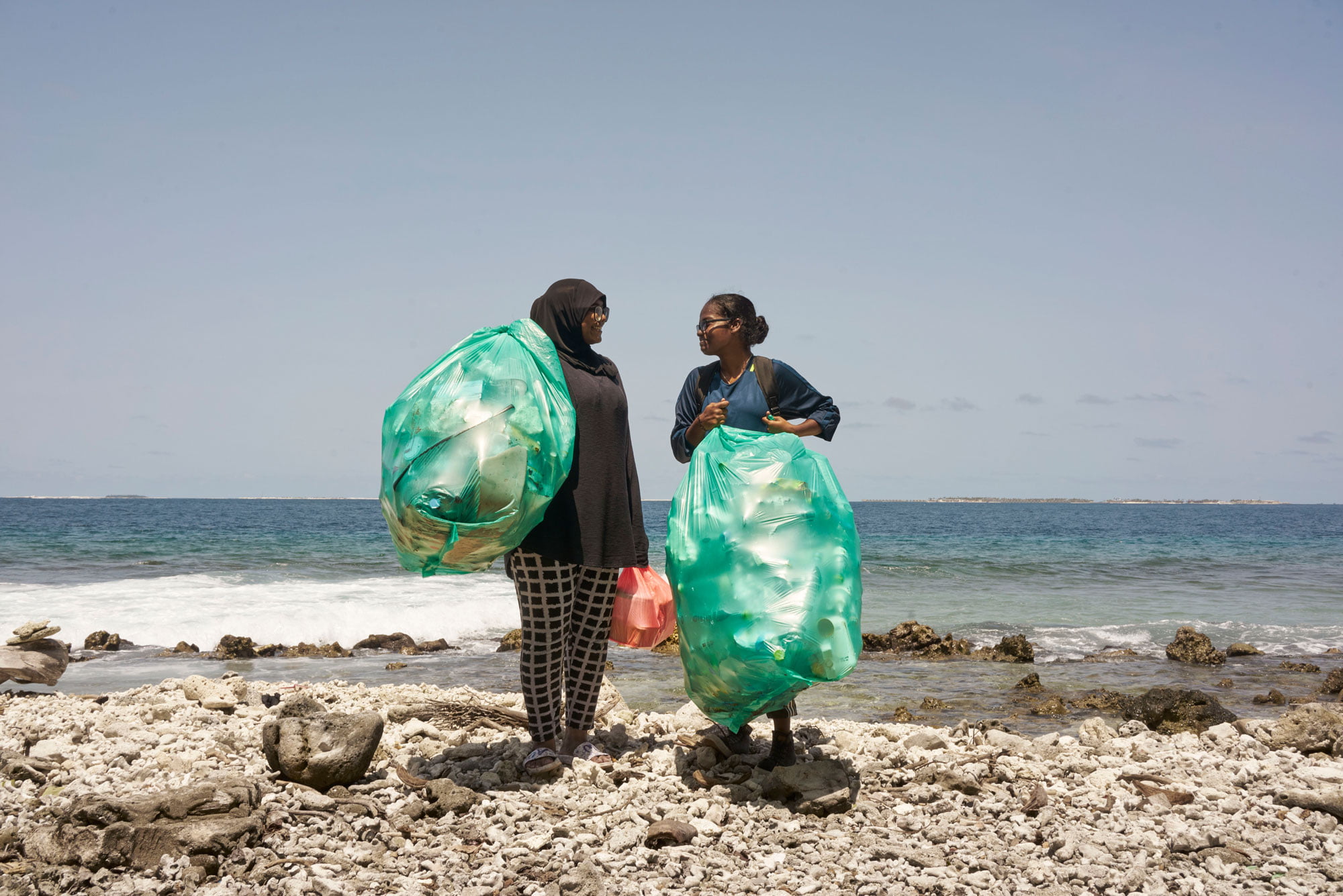
Local volunteers collect waste weekly. Increasing awareness is leading to action.
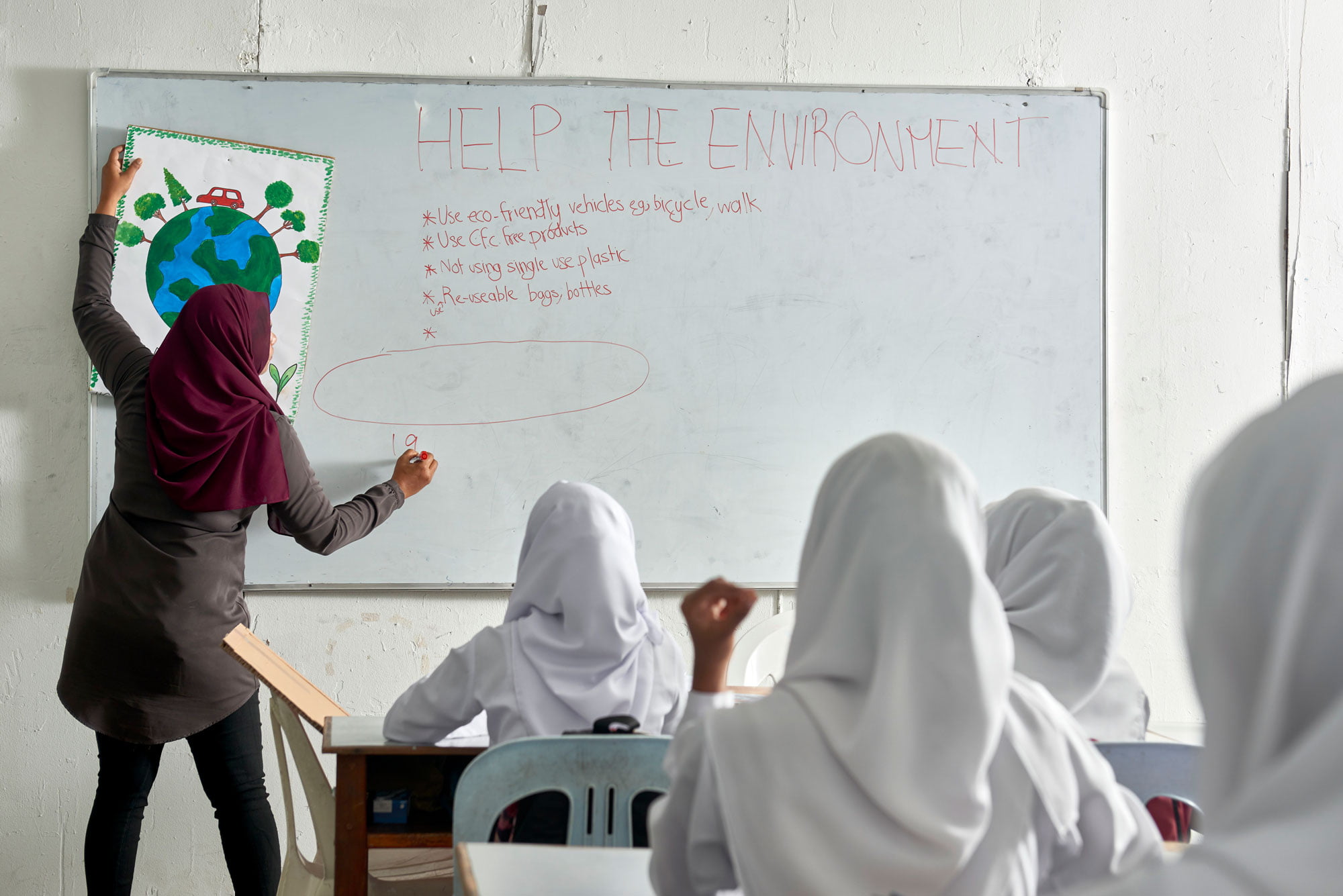
Environmental education at school.
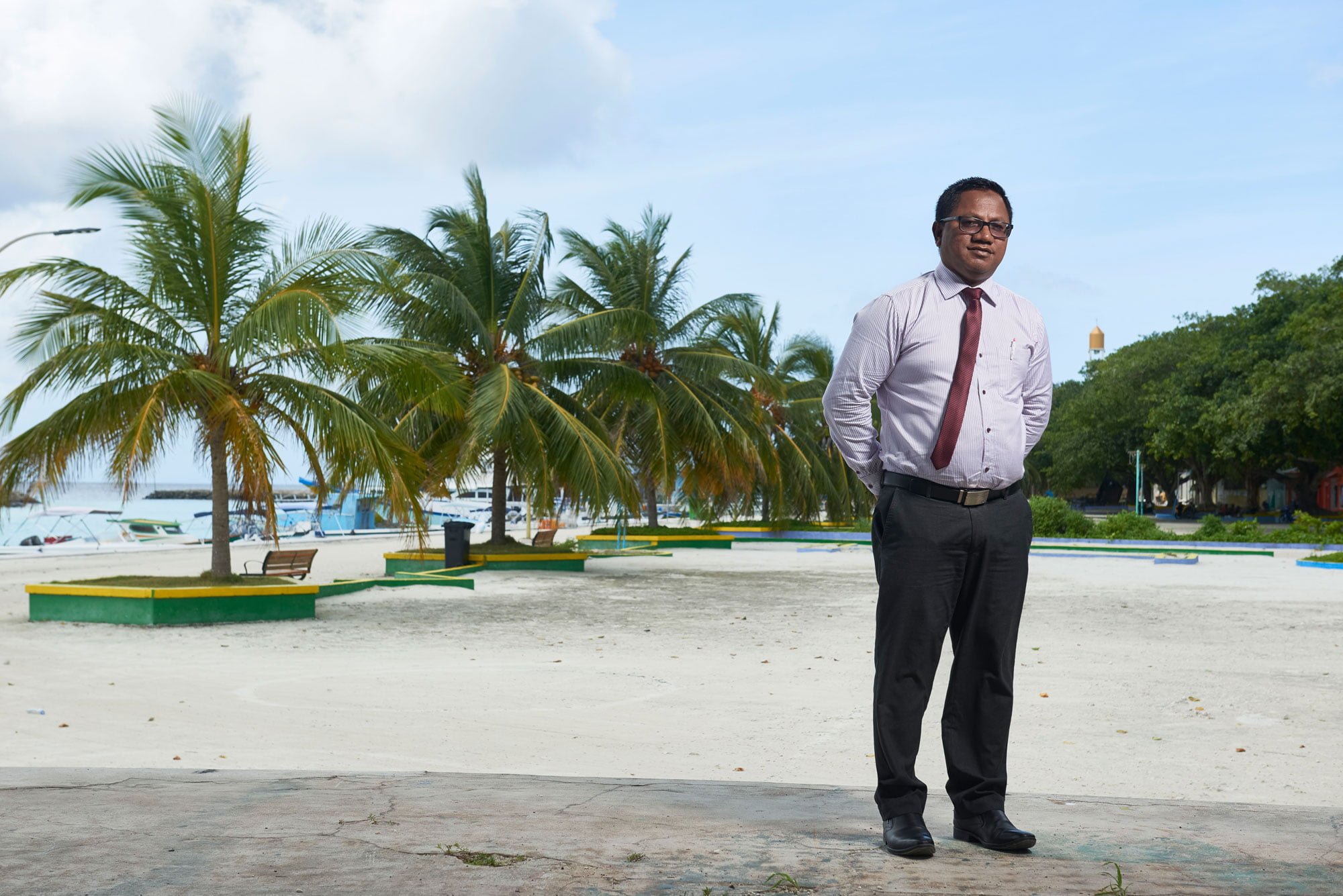
The mayor of Ukulhas. The island prides itself on its eco‑friendly waste management system and youth education programmes.

Traditional pole-and-line fishing is being promoted as a more sustainable alternative to commercial net fishing.
